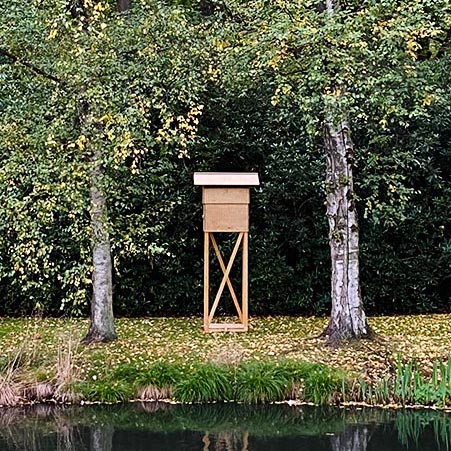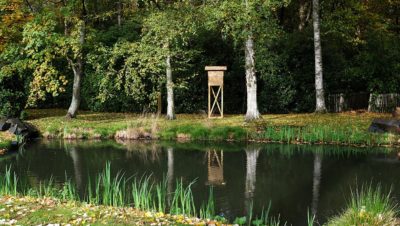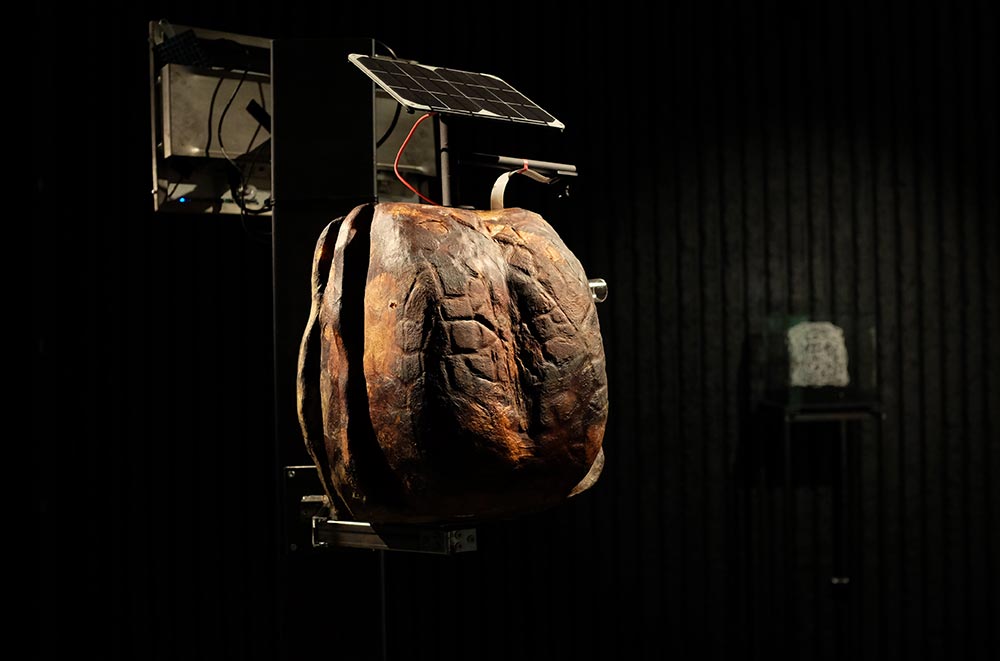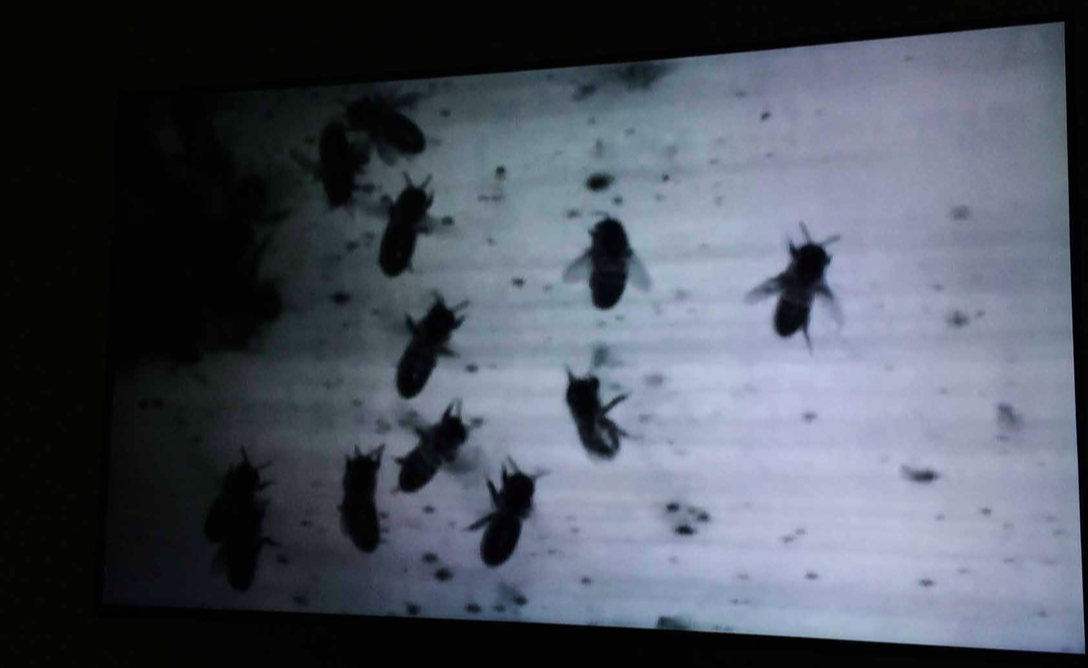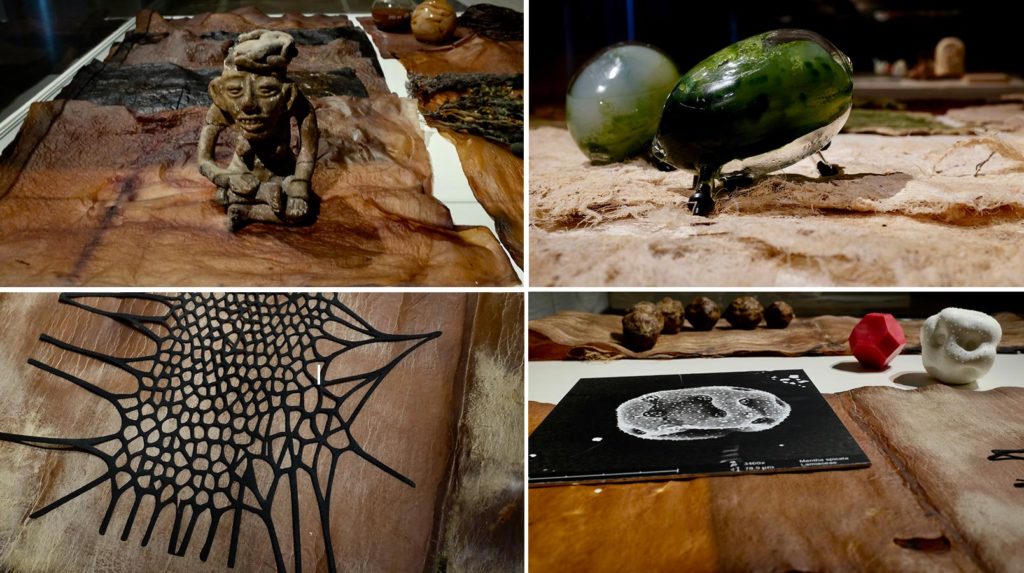(en) OORtreders Festival is a 3-day celebration of sound within the landscape of the Limburg Canal Zone. From early morning concerts to deep listening sessions; the festival explores introvert and exciting formats, on the cutting edge of sound and society. This year’s programme changing ecologies & new narratives connects audiences and artists in minimal settings, exploring the unclassifiable relationship between humans and nature through sound.
https://www.oortreders.com/en/about-oortreders
(nl) OORtreders Festival is een 3-daags feest van geluid middenin het landschap van de Limburgse Kanaalzone. Het festival verkent introverte en opwindende formats, van dauwconcerten tot deep listening sessies, op de cutting edge tussen geluid en samenleving. Met een uitgebalanceerde hoeveelheid ruimte voor elke muzikale indruk, verweeft het programma lokale gemeenschappen met de internationale scène, in de noodzaak om te creëren en het onbekende te versterken. Het programma van dit jaar changing ecologies & new narratives verbindt publiek en artiesten in minimale settings en onderzoekt de niet-classificeerbare relaties tussen mens en natuur door middel van geluid.
https://www.oortreders.com/nl/over-oortreders
AnneMarie Maes op/at OORtreders: Exterior, installation in Klankenbos
(en) The Scaffolded Sound Beehive is a beehive made on human size. Visitors can put their head inside it and experience an auditory artistic interpretation of the activity inside a beehive. AnneMarie Maes and Billy Bultheel created the audio piece from the 8-channel field recordings made in the broodnest of the experimental Warré-beehive set-up. The artists were working with the recordings from the longest day / shortest night (24 hours of the 21st of june) and edited them into a 13’59”-piece on which some processing was done using 2 additional sound sources located at the entry of the beehive. The beehive recordings pan over the spectrum of a day (from midnight to midnight). As a compositional principle different ideas around swarm formation were investigated. The increase and decrease of swarm activity in the hive and its influence on its sound, became a guideline for the transformation of the recordings. Hereby using natural phenomena as musical tools and in retrospect, using musical tools as an artistic rendition or analysis for natural phenomena. The audio work tries to embody the bee swarm while simultaneously intersecting the swarm with swirling electronic sound clusters. The work exists both as a Stereo and as an 8 channel audio work.
The installation is part of the 3-day Expo-route of OORtreders festival, from 23.10-25.10 2020, at various locations in and around Provinciaal Domein Dommelhof, the Canal Zone and Gemeente Pelt. After the festival, the Scaffolded Sound Beehive will become part of the permanent Klankenbos collection.
(nl) De Scaffolded Sound Beehive is een ecologische bijenkorf die uitvergroot is naar mensenmaat. Bezoekers kunnen er gaan instaan en hun hoofd in het dak steken om zo een auditieve artistieke interpretatie te horen van de activiteit in de bijenkorf. De Scaffolded Sound Beehive is een tentoonstellingsplatform waarop de ecodata die tijdens een bijenseizoen door de kunstenaar een een soortgelijke bijenkast werden verzameld, openbaar gemaakt worden. De geluidsinstallatie binnenin de sculptuur is een uitwerking van de veldopnames die gemaakt zijn in het broednest van de echte bijenkorf. AnneMarie Maes werkte samen met de geluidskunstenaars &Apos en Bill Bultheel aan verschillende versies van de veldopnames.
De Scaffolded Sound Beehive maakt deel uit van de 3-daagse Expo-route van 23.10-25.10 2020 op verschillende locaties in en rond Provinciaal Domein Dommelhof, de Kanaalzone en de Gemeente Pelt. Na afloop van het OORtreders festival wordt de installatie opgenomen in de permanente collectie van het Klankenbos.
AnneMarie Maes op/at OORtreders: Interior, exhibition in Dommelhof
(nl) BEE AGENCY is een project op de snijlijn van kunst, design en wetenschap. Bestuivende insecten worden in alle geïndustrialiseerde landen bedreigd. Gezien het feit dat het voortbestaan van deze bestuivers cruciaal is voor het voortbestaan van de mens, is er nood aan de manieren te verbeteren waarop de bestuivers kunnen gedijen. Met het Bee Agency project wil AnneMarie Maes de honingbijën (Apis mellifera) terug meer autonomie geven en de kolonies ondersteunen om weer ‘in het wild’ te gaan leven, na te lang gedomesticeerd te zijn geweest door honingboeren. In het Bee Agency project werken bijen, mensen, micro-organismen (zoals bacteriën) en planten samen om een goede basis te leggen voor een verdere gezonde ontwikkeling van ons ecosysteem.
De Bee Agency installatie is te bezichtigen in het foyer van Dommelhof.
(en) BEE AGENCY is a project on the interstices of the arts, design and science.
Pollinators are threatened in all industrialized nations. Given that the survival of bees is crucial for human sustainability, there is a great urgency to improve by all means the ways in which wild colonies could thrive. With the Bee Agency project, AnneMarie Maes wants to give back autonomy to the Apis mellifera and support colonies to live again ‘in the wild’, after being domesticated for too long. In this project, bees, humans, microorganisms and plants are working together to assure a sound basis for the further development of our ecosystem.
The Bee Agency exhibition is located inside the foyer of Dommelhof.
(nl) De sculptuur ‘Intelligent Guerilla Beehive’ biedt een schuilplaats aan zwermende bijënkolonies. Het ontwerp is geïnspireerd op de natuur. De inhoud speelt in op de nestbehoeften van een bijënkolonie die in het wild leeft, en de mobiele architectuur maakt de hive gemakkelijk inzetbaar op verschillende plekken in de openbare ruimte. Vandaar de naam: de Intelligent Guerilla Beehive. Deze bijenkorf kan op de muur van een gebouw worden geënt of aan een tak van een boom in een park worden vastgemaakt. De bijënkorf is uitgerust met een sensornetwerk om zo op een niet-storende manier de gezondheid van de bijënkolonie te kunnen volgen. De Intelligent Guerrilla Beehive is gemaakt van organisch materiaal dat de bijën ondersteuning biedt op het gebied van temperatuurschommelingen, vochtigheid en ventilatie. De bijënkorf heeft een hoog tactiel vermogen; de flexibele bacteriële cellulose van de buitenste huid en de warme en zachte kurk van de binnenste huid nodigen uit om aan te raken en te voelen. Alle materialen zijn biologisch afbreekbaar.
(en) The Intelligent Guerilla Beehive proposes a shelter for swarming bee colonies. The design is inspired by nature. The content responds to the nest-needs of a bee colony living in the wild, and the mobile architecture makes it easily deployable on different spots in public space, hence its name: the Intelligent Guerrilla Beehive. The hive can be grafted on the wall of a building or wrapped around the branch of a tree in a park. The beehive has been enhanced with a sensor network in order to monitor the health of the colony without interference and thus allow better care. The Intelligent Guerrilla Beehive is made out of smart organic materials with usefull properties in respect to temperature fluctuation, humidity and ventilation. The hive has a high tactile potential; the flexible bacterial cellulose of the outer skin and the warm and soft cork of the inner skin invite to touch and feel. All materials are biodegradable.
(nl) De video Variation Games (13’59”) is een montage van een jaar lang audiovisuele observatie van het gedrag van een honingbijënkolonie in hun privé-omgeving. De opnames werden gemaakt met een infraroodcamera en met contactmicrofoons binnen in de bijenkorf. We volgen hoe de bijen hun nest beginnen te bouwen. Eerst scannen ze de nieuwe ruimte en maken deze schoon en verwijderen vreemde voorwerpen. Daarna organiseren de werkbijen zich om het nest te bouwen. Hierbij tonen ze hoe ze samenwerken, en hoe besluitvorming, het netwerken, en de samenwerking tekenen zijn van collectieve intelligentie. De groep bijën is gebouwd op diversiteit, en die zorgt voor veerkracht.
(en) The video Variation Games (13’59”) is an edit of a year-long audiovisual observation of the behaviour of a honeybee colony in their private environment. The recordings are made with an infrared camera and contact microphones inside the beehive. We follow how the bees start to build their nest. First they scan the new space and clean it from foreign objects. Then the worker bees organize to build the nest. Hereby they reveal decision-making, networking, collaboration and collective intelligence. Single agents are teaming up without any decision maker. Important is the arrangement and relationship of the tasks which provokes the emergence of a bottom-up intelligence in this self-managed group with independent actuators. The group is build on diversity which provides resilience.
(nl) Het Laboratorium voor Vorm en Materie is een project op het snijvlak van biologie, ecologie, technologie en hedendaagse cultuur. Het onderzoek wordt gevoed door mijn interesse in bacteriën als medium voor artistieke expressie en door een zekere fascinatie voor natuurlijke structuren en organische processen op microscopisch niveau, zoals de samenwerking in bijenkolonies en de kracht van schimmelnetwerken. De artistieke neerslag van dit onderzoek kristalliseert zich in de creatie van objecten en installaties, en door het geven van workshops, presentaties en performances.
In de artistieke processen worden de volgende technieken gebruikt: digitale fabricage, 3D printen, lasersnijden, traditionele modelleringstechnieken, creatie van textiel met plantaardige materialen, creatie van biotextiel met micro-organismen, onderzoek naar intelligente biotextielen door toevoeging van biofilms met bacteriën, onderzoek naar de implementatie van artisanale, industriële en organische materialen in artefacten, …
In de biologische wereld worden structuren gevormd met een grote verscheidenheid aan vormen en met een minimum aan energie. Organismen gebruiken eenvoudige moleculaire chemie en een overvloed aan organische grondstoffen om complexe structuren te bouwen zoals bijen-, vogelnesten of termietenheuvels. Deze biologische structuren zijn ingebed in hun omgeving, ze zijn responsief en bestand tegen verstoringen van de omgeving en ze zijn ook volledig recyclebaar. Vanuit deze biomimesis voer ik mijn onderzoek uit naar nieuwe materialen en structuren.
(en) The Laboratory for Form and Matter is a project at the intersection of biology, ecology, technology and contemporary culture. The research is fed by my interest in bacteria as a medium for artistic expression and by a certain fascination for natural structures and organic processes at microscopic level, such as the collaboration in bee colonies and the strength of fungi networks. The artistic precipitation of this research crystallizes in the creation of objects and installations, and by giving workshops, presentations and performances. For the artistic research the following techniques are used: digital fabrication, 3D printing, laser cutting, traditional modeling techniques, creation of textiles with plant materials, creation of biotextiles with microorganisms, research on intelligent biotextiles by adding biofilms with bacteria, research on implementation of artisanal, industrial and organic materials in artifacts, … but also theoretical research, discussions with colleagues, reading circles and so on. In the biological world structures are formed with a wide variety of forms and with a minimum of energy. Organisms use simple molecular chemistry and an abundance of organic resources to build complex structures such as bee, bird nests or termite mounds. These biological structures are embedded in their environment, they are responsive and resistant to disturbances from the environment, and they are also fully recyclable. Starting from this biomimesis, I conduct my research into new materials and structures.
(nl) Exoskeleton (grote foto) 160cm x 215cm
Dit is een stuk van het skelet van de honingbij, verzameld op de bodem van de bijenkorf. Het monster is 100 keer vergroot.
Glossa (kleinere foto) 72cm x 56cm, x 150 vergroot
Glossa is het Griekse woord voor ‘tong’. De glossa is vergelijkbaar met een lange gesegmenteerde cilinder die bedekt is met haren. Wanneer de bijen foerageren, wordt de tong verlengd en ondergedompeld in de nectar. De haren op de glossa staan rechtop om de vloeistof op te vangen en de nectar wordt in de keel van de bij gezogen. Naast het feit dat het een voedingsinstrument is, dient de bijentong ook voor het oplikken van de feromonen van de koningin, die via de feromonen het leven in de bijenkorf reguleert. Glossa is dus ook een soort communicatie-instrument.
Black Debris (x 250 vergroot) : Het Black Debris is een klein vervuilingsdeeltje dat ik op de bodem van de bijenkorf heb verzameld. De vacht van de honingbij is elektrostatisch geladen en daardoor trekken de haren naast stuifmeel ook veel verontreinigingsdeeltjes aan die de bijen naar de bijenkorf terugbrengen.
(en) Exoskeleton (big photo – 160cm x 215cm
) is a piece of the skeleton of the honeybee, collected on the bottom of the beehive. The sample is magnified 100 times.
(smaller photos)
Glossa (72cm x 56cm, 150x magnified) is the Greek word for ‘tongue’. The glossa is similar to a long segmented cylinder covered with hairs. When the bees are foraging, the tongue is extended and immersed into the nectar. The hairs on the glossa erect to collect the liquid and the nectar is sucked into throat of the bee. Besides being a feeding instrument, the bee-tongue serves also for licking the queens’ pheromones which regulate the life in the hive. So it is also a kind of communication instrument.
Black Debris (72cm x 56cm, 250x magnified) :
The black debris is a small pollution particle that I collected on the bottom of the beehive. The fur of the honeybee is electrostatically charged and thus the hairs attract, besides pollen, also plenty of pollution particles that the bees bring back to the beehive.
